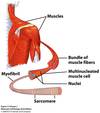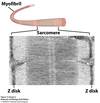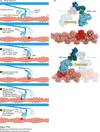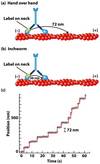Motor Proteins (associated with actin filaments) Flashcards
(88 cards)
makes muscles contract
myosin II
structure in skeletal muscle made of multiculeated cells
fibers
each cell from fibers contain a bundle of:
myofibrils

each myofibril contains thousands of contractile units called:
sarcomeres

links ECM to cytoskeleton in muscle cells
dystrophin glycoprotein complex

signaling molecule in skeletal muscle
NOS
muscle contraction increases levels of:
Ca2+
Ca2+ increase during muscle contraction activates:
NOS
activation of NOS in skeletal muscle produces:
NO
caused by NO diffusion to blood vessels
smooth muscle relaxation
relaxing smooth muscle causes increased:
blood flow to muscle tissue
label the parts of a sarcomere


thin actin filament charge type embedded in Z-disk
positive charge
consists of thin filaments
I-band

consists of bipolar myosin thick filaments
A-band
first molecular motor identified from skeletal muscle
Myosin II
this part located at myosin N-terminus
globular heads
myosin globular heads at N-terminus contain:
force generating machinery
myosin globular heads, light chains, and hinge region connected to:
coiled-coil of two alpha helices

approach to ID functional domains within a protein is to:
cleave into fragments site-specific proteases

cleaves myosin into two fragments (heavy- and light-mero-myosin)
Chymotrypsin

protease cleaves HMM (heavy-mero-myosin) into subfragment 1 (S1) and subfragment 2 (S2)
Papain
subfragment contains myosin head and neck regions
S1
these comprise the myosin tail
S2 and LMM

















